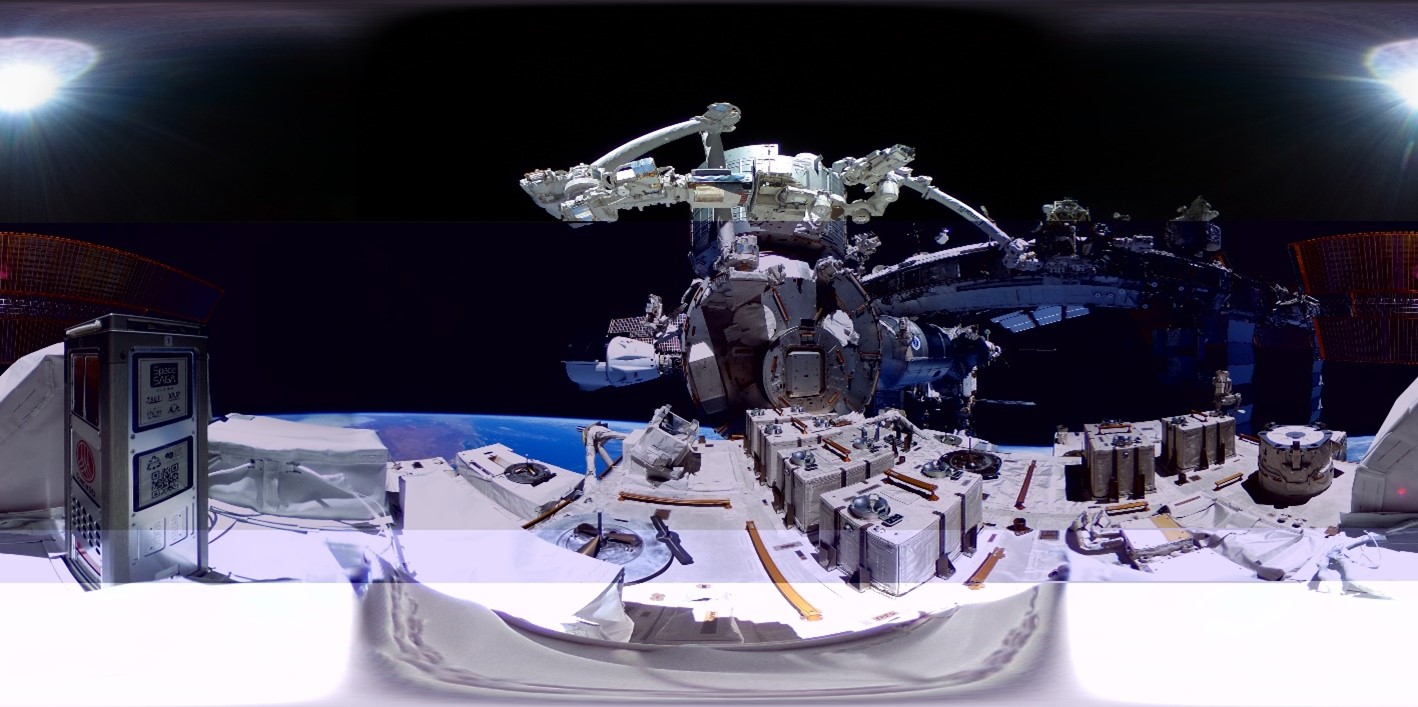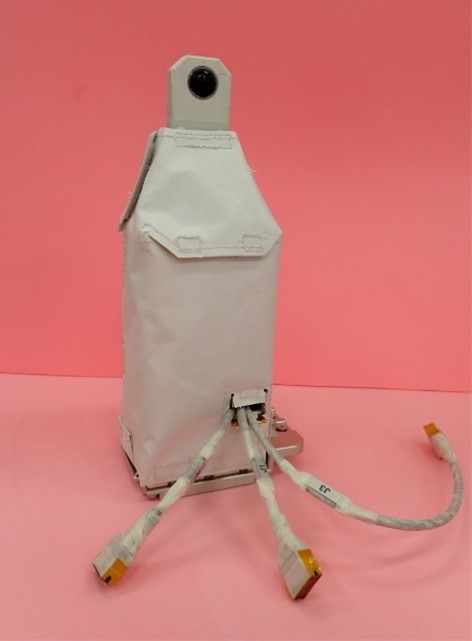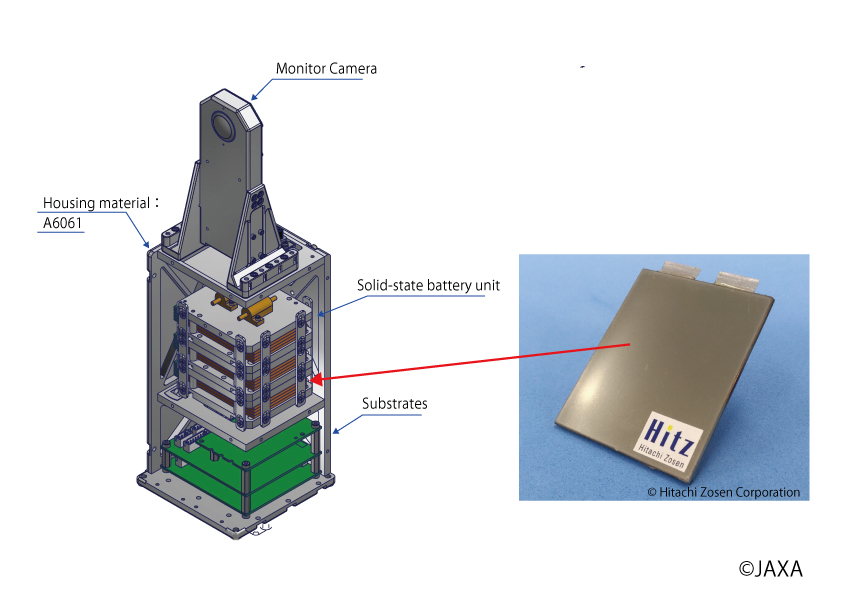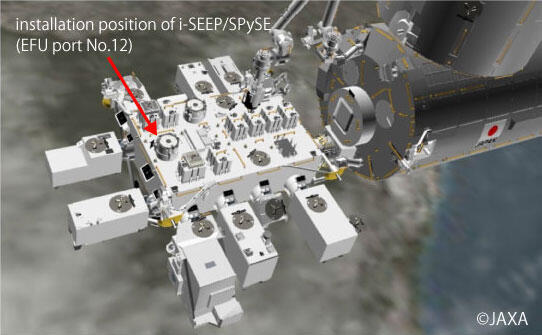JAXA and Hitachi Zosen Jointly Confirm
All-solid-state Lithium-ion Batteries’ Charge/Discharge Operation in Space,
World First
Japan Aerospace Exploration Agency (JAXA)
Hitachi Zosen Corporation
August 5, 2022 (JST)
National Research and Development Agency Japan Aerospace Exploration Agency (President: Hiroshi Yamakawa; hereinafter “JAXA”) and Hitachi Zosen Corporation (President & CEO: Sadao Mino; hereinafter “Hitachi Zosen”) have carried out a demonstration experiment for the charge and discharge operation of all-solid-state lithium-ion batteries installed in the Japanese Module “Kibo” on the International Space Station (ISS), and confirmed their appropriate performance in the space environment, marking the world’s first success of its kind.
JAXA and Hitachi Zosen have been collaborating on the development of all-solid-state lithium-ion batteries since 2016 under the framework of Space Exploration Innovation Hub’s call for research proposals(*1). The technology under development is designed to have a broad operating temperature range from -40℃ to 120℃ and adopt flame-retardant materials that carry only a minimal risk of ignition, smoking and rupture, seeking to help reduce the size and weight as well as power usage of equipment to be used under harsh space environment conditions, such as exposure to cosmic vacuum and radiation. Expectations are especially high for application to small-size equipment and use in exposed experiment facilities, which look for a better space saving solution than can be offered by organic electrolyte solution-based lithium-ion batteries that are conventionally used in space.
In the recent experiment, the all-solid-state lithium-ion battery on-orbit experiment equipment (Space AS-LiB) was launched on February 20, 2022 (JST) to the ISS and was installed in the Small Payload Support Equipment (SPySE)(*2) on the Exposed Facility of the Japanese Experiment Module “Kibo.” The mission of Space AS-LiB was to conduct a demonstration experiment for the charge and discharge operation of all-solid-state lithium-ion batteries in space, and the mission was fulfilled on March 5, confirming adequate performance of the operation, marking the world’s first success of its kind. The photo below was taken by the monitoring camera mounted on the Space AS-LiB unit using the power supplied by the batteries in the experiment.

To advance the ongoing development, we will conduct new demonstration experiments to evaluate properties exhibited by the batteries under space environment conditions. Major coming plans will be to obtain data related to: basic characteristics of charge and discharge operation; and decline in battery capacity under space-exposed condition (exposure to cosmic vacuum, radiation, microgravity, etc.).
For expected use of the all-solid-state lithium-ion batteries, we look at observation equipment and small rovers to be deployed on the Moon. We also plan to expand the capacity, with a view to use for fully equipped large rovers and other spacecraft. Applications will also be considered for on-the-ground uses, such as for industrial equipment to be used under extremely high or low temperatures and vacuum conditions, medical equipment requiring high-temperature sterilization, and others needing better battery capabilities than offered by conventional products.
※1
In 2016, JAXA signed an agreement with National Research and Development Agency Japan Science and Technology Agency to collaborate on the development of “all-solid-state lithium-ion secondary batteries” in the “innovation hub construction support” (Open Innovation Hub for Expanding Humanosphere and Domain of Human Activity through Solar System Frontier Development), which was entrusted with JAXA, and the project was implemented from 2016 to 2018. The related research was continued, and in February 2021, JAXA and Hitachi Zosen concluded a joint research agreement to carry out demonstration experiments for the practical use of all-solid-state lithium-ion batteries in space. In February 2022, the all-solid-state lithium-ion battery on-orbit experiment equipment (Space AS-LiB) was launched to the ISS and was installed on the Exposed Facility of the Japanese Experiment Module “Kibo.” Space AS-LiB has been in operation up to the present.
Reference: related link
Decision to conduct a demonstration experiment for the practical use of all-solid-state lithium-ion batteries in space
https://global.jaxa.jp/press/2021/02/20210202-1_e.html
※2 An experiment infrastructure that has been developed by JAXA to diversify and expand the use of the IVA-replaceable Small Exposed Experiment Platform (i-SEEP), which is installed on the Exposed Facility of the Japanese Experiment Module “Kibo” on the ISS. It is attached to one side of the i-SEEP’s equipment loading area to provide and interface that allow up to 8 small devices (10 cm square in area, 30 cm maximum in height) to be on board together. JAXA also plans to conduct a functional verification of SPySE through the installment on the all-solid-state lithium-ion battery.



Overview of the all-solid-state lithium-ion battery used in the demonstration experiment
We used the all-solid-state lithium-ion batteries resulting from the joint research and development project of JAXA and Hitachi Zosen, based on the technology developed by Hitachi Zosen in 2016.
Size
- 65㎜ x 52㎜ x 2.7㎜
Mass
- https://www.hitachizosen.co.jp/english/img/index_im06.jpg
- 25g
Capacity
- 140mAh(to be connected in parallel with 15 cells to achieve a power supply of about 2.1Ah)
Features
- Solid electrolytes have strong temperature resistance, reducing risks of transformation at low temperature and decomposition at high temperature, and thus enabling stale operation at a broad temperature range from -40℃ to 120℃.
- No liquid material is used, posing no risks of leakage. Flame-retardant solid electrolyte is used, posing no risks of ignition, smoking, and rupture.
- Battery is configured with microminiaturized minimized volatile components designed to prevent expansion even under vacuum.
Related Links

